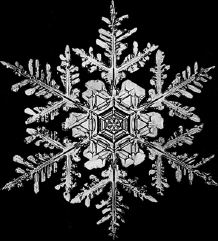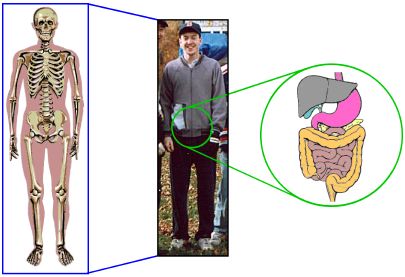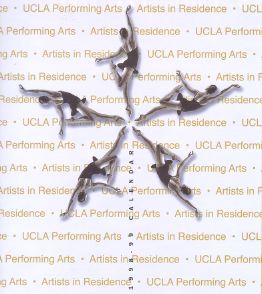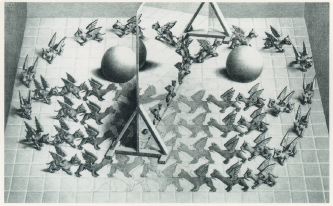The connections between symmetry, science, art, and everyday life are plentiful. My interest in such matters has led to an extensive collection of images, some of which are shown below, as well as a class for undergraduate non-science majors given at UCLA in the Spring of 1999 as part of the Collegium of University Teaching Fellows.
Much has been written on this subject, but a few of my favorite issues and images are shown below.
This is an actual photograph of a snow crystal taken by Wilson Bentley.
I can think of no better demonstration of the connections between macroscopic and molecular structure.
Research into snow crystal structure is ongoing in the laboratory of Kenneth G. Libbrecht in the CalTech Physics Department and at the Electron Microscopy Unit of the Nematology Laboratory at the Beltsville Agricultural Research Center.
For computer simulations of snow crystal growth, see the work of UC Davis' Janko Gravner and Wisconsin's David Griffeath.
This image is meant to emphasize the fact that the exterior and some internal systems of the human body are (roughly) symmetric while others are not.
How might such a fickle body plan evolve?
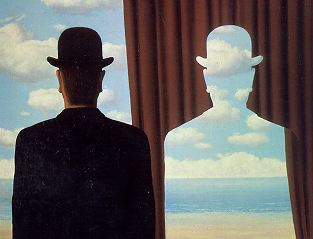
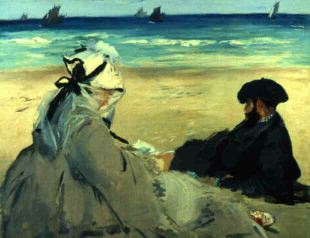
These images, a painting by Magritte, a painting by Manet, and an impromptu photograph taken by one of my friends (entitled, "A Gentleman and an Officer"), demonstrate the concept of antisymmetry.
What role might this organizing principle have in how these images are perceived?
There are also many applications of antisymmetry in science; quantum mechanics, for example, is littered with them.
This is the cover of a brochure advertising performing arts events at UCLA.
It is just one example of the many encounters one might have with symmetry on a daily basis.
This is my favorite of M.C. Escher's works of art. It is called "Magic Mirror."
It demonstrates that the use of symmetry in art can be complex.
It can also be a very conscious process of construction.
